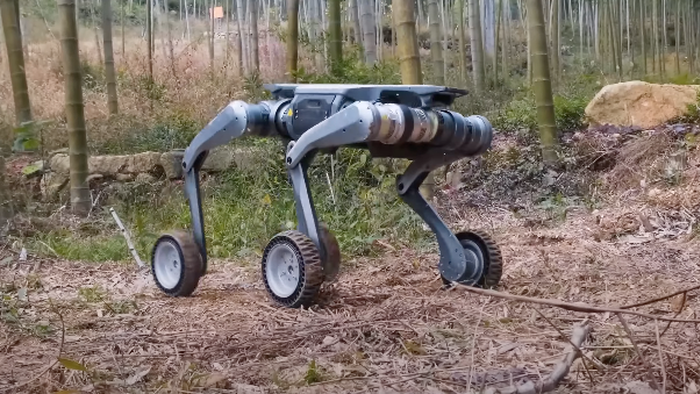In the rapidly evolving world of robotics, Tesla faces stiff competition from companies like Unitree and Deep Robotics. Unitree, a Chinese robotics firm, has made headlines with its humanoid G1 robot, priced at $40,000, and with its innovative robo-dogs available on the Amazon marketplace. These products signify a strategic push not just towards humanoid robotics but also animal-like robots capable of performing various tasks. Unitree’s offerings are emblematic of a broader trend in robotics, where versatility and functionality take precedence, and they cater to diverse consumer and industrial needs.
Meanwhile, Deep Robotics has garnered attention with the release of a new video showcasing its latest robo-dog equipped with wheels. This design innovation enhances the robot’s adaptability, particularly its ability to traverse challenging terrains such as steep hills and rugged off-road environments. Such advancements underscore the significance of mobility in the development of robotic systems, indicating that mere locomotion with legs may not always be the most efficient solution for dynamic environments. Deep Robotics promotes itself as a pioneer in embodied AI technology and has achieved notable milestones, such as being the first company in China to facilitate fully autonomous inspections of substations using quadruped robots.
The core team at Deep Robotics is grounded in a robust academic background, drawn from prestigious institutions such as Zhejiang University, Shanghai Jiao Tong University, and New York University, among others. This concentration of talent and expertise bolsters the company’s innovation capabilities and reflects a significant investment in research and development. The specialized knowledge within the organization enhances its potential to push boundaries in the realm of robotics, potentially positioning it as a leader in the sector. This combination of skilled professionals and cutting-edge technology promises to drive further advancements in robotic capabilities, setting the stage for significant developments in the near future.
Deep Robotics’s quadruped robots have garnered attention not only for their technological feats but also for the implications they carry for various applications, from industrial inspections to potential military uses. The notion that such robots can be employed for autonomous inspections hints at a future where robotic systems could significantly reduce human labor in hazardous or inaccessible environments. As depicted in the recent videos, the agile nature of these robots raises intriguing possibilities, including their potential use in conflict zones, where they might be adapted for various purposes—ranging from logistics support to surveillance.
The potential militarization of robotic technology is a growing concern and topic of discussion within the field of robotics and AI. Speculative commentary about leveraging such advanced machines for military applications—such as equipping these robots with weaponry—suggests that the capabilities of robotics can quickly transcend their originally intended purposes. The mention of Ukrainian forces considering modifications to harness these innovations underscores a critical discourse surrounding the dual-use nature of technology, necessitating a thoughtful dialogue about the ethical consequences and governance surrounding such developments.
In conclusion, the advances made by companies like Unitree and Deep Robotics signify a remarkable shift in the robotics landscape, driven by innovative designs and powerful AI capabilities. As they carve out significant niches in both consumer and industrial robotics, the implications of their technologies extend beyond basic functionalities, hinting at transformative changes in various sectors. From enhancing autonomous inspection processes to raising concerns about military applications, the trajectory of robotics will continue to invite scrutiny and speculation, making it imperative for stakeholders across industries to engage with the associated challenges and opportunities thoughtfully. As we navigate this complex landscape, it becomes increasingly important to balance innovation with ethical considerations to harness the full potential of robotics responsibly.

